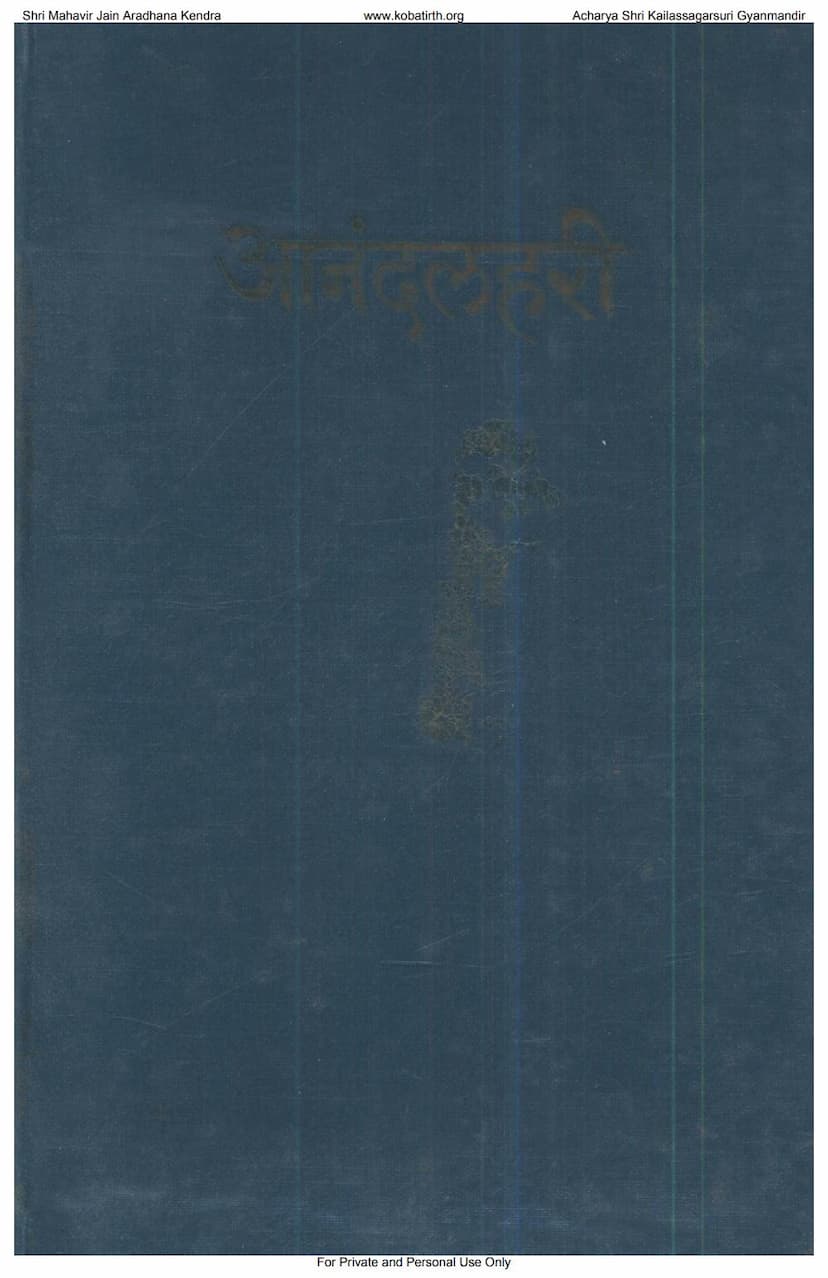Anand Lahari
Added to library: September 1, 2025

Summary
Anand Lahari: A Summary
This document is a compilation of lectures by Pandurang V. Athawale, published by Sadvichar Darshan Trust. The lectures, originally featured in the magazine "Tatvajnan," delve into the philosophical and devotional aspects of the "Anand Lahari," a hymn attributed to Adi Shankaracharya. The core theme revolves around the worship of the Divine Mother, referred to as "Maa" or "Jagadamba," and the profound nature of devotion.
Key Themes and Concepts:
- The Devotional Plea to "Maa": The text emphasizes that Shankaracharya, despite his immense knowledge and spiritual stature, addresses the Divine Mother with deep emotion and reverence, calling her "Maa." This highlights the power of heartfelt devotion and the recognition of divine maternal qualities in the ultimate reality.
- The Superiority of "Maa's" Worship: The hymn begins by stating that even Brahma, Shiva, Kartikeya, and Shesha Naga, with their numerous heads, are incapable of fully praising the Divine Mother. This underscores the ineffable glory and power of the Divine Mother, suggesting that her true essence is beyond the grasp of even the greatest celestial beings.
- The Nature of True Idol Worship: The text critiques superficial idol worship, stating that it is meaningless if not accompanied by genuine devotion and a radiant inner state. True worship involves understanding the divine power residing within the idol, which can elevate the devotee's life. Idolatry without inner feeling can be detrimental.
- Shankaracharya's Exemplary Life: The lectures elaborate on Shankaracharya's life, highlighting his unparalleled intellect, profound devotion, and commitment to action (karma yoga). His ability to master the Vedas at a young age, write commentaries on major philosophical texts by sixteen, and his extensive travels propagating spiritual knowledge are mentioned as testaments to his greatness.
- Divine Qualities of the "Maa": The "Maa" is described as possessing both masculine (fierce power) and feminine (compassion, love) qualities, mirroring the concept of Shiva as Ardhanarishvara. Her nature is described as encompassing both strength and gentleness, a blend that makes her approachable and awe-inspiring.
- The Inexpressible Nature of Divine Attributes: The lectures stress that the divine attributes, like sweetness, beauty, and knowledge, are beyond mere words and intellect. They are meant to be experienced through direct realization. The inability of even the Vedas to fully describe these qualities emphasizes their transcendental nature.
- The Role of Devotion and Surrender: The text explains that while intellect and knowledge have their limits, sincere devotion and complete surrender to the Divine Mother are key to experiencing her grace. The analogy of the cuckoo bird's plea to the clouds illustrates the earnest longing for divine favor.
- The Significance of the "Maa" as the Source of Creation and Liberation: The Divine Mother is identified as the creator of Dharma, the mother of the Vedas, the root of all wealth, and the source of all desires. She is also the ultimate goal of liberation for the virtuous.
- The Power of Divine Grace: The lectures emphasize that divine grace is not contingent on one's actions or merits. Even those who falter or stray are ultimately embraced by the Divine Mother's compassion. The story of the prodigal son is invoked to illustrate this boundless grace.
- The Importance of an Empty Mind for Divine Realization: To truly perceive the Divine, one's mind must be free from past regrets, future anxieties, and present distractions. An empty and receptive mind is essential for experiencing the divine presence.
- The Nature of True Devotion: True devotion is characterized by an unconditional and unwavering love for the Divine. It transcends mere ritual or outward show. The lectures contrast the devotion of those who seek worldly gains with the selfless love of true devotees.
- The Divine Mother as the Ultimate Refuge: The text assures that the Divine Mother is the sole refuge for those who are lost or helpless. Her love and protection are constant and unconditional.
- The Beauty of the Divine: The descriptions of the Divine Mother's beauty are intricate, encompassing her divine attire, her captivating eyes, and the radiant aura that surrounds her. These descriptions aim to inspire awe and devotion in the reader.
- The Transformative Power of Divine Presence: The lectures highlight how the mere remembrance or contemplation of the Divine Mother can alleviate suffering and bring about spiritual transformation. The presence of the Divine is seen as the ultimate source of peace and liberation.
- The Interplay of Divine Grace and Human Effort: While divine grace is paramount, human effort in the form of devotion, meditation, and spiritual inquiry is also crucial. The text encourages a balanced approach, acknowledging both the divine's role and the devotee's responsibility.
In essence, "Anand Lahari" is presented as a profound exploration of devotion to the Divine Mother, emphasizing heartfelt surrender, the transformative power of divine grace, and the ultimate transcendence of worldly limitations through spiritual connection. The lectures aim to guide the reader towards experiencing the "Anand Lahari" – the wave of bliss – that arises from such devotion.